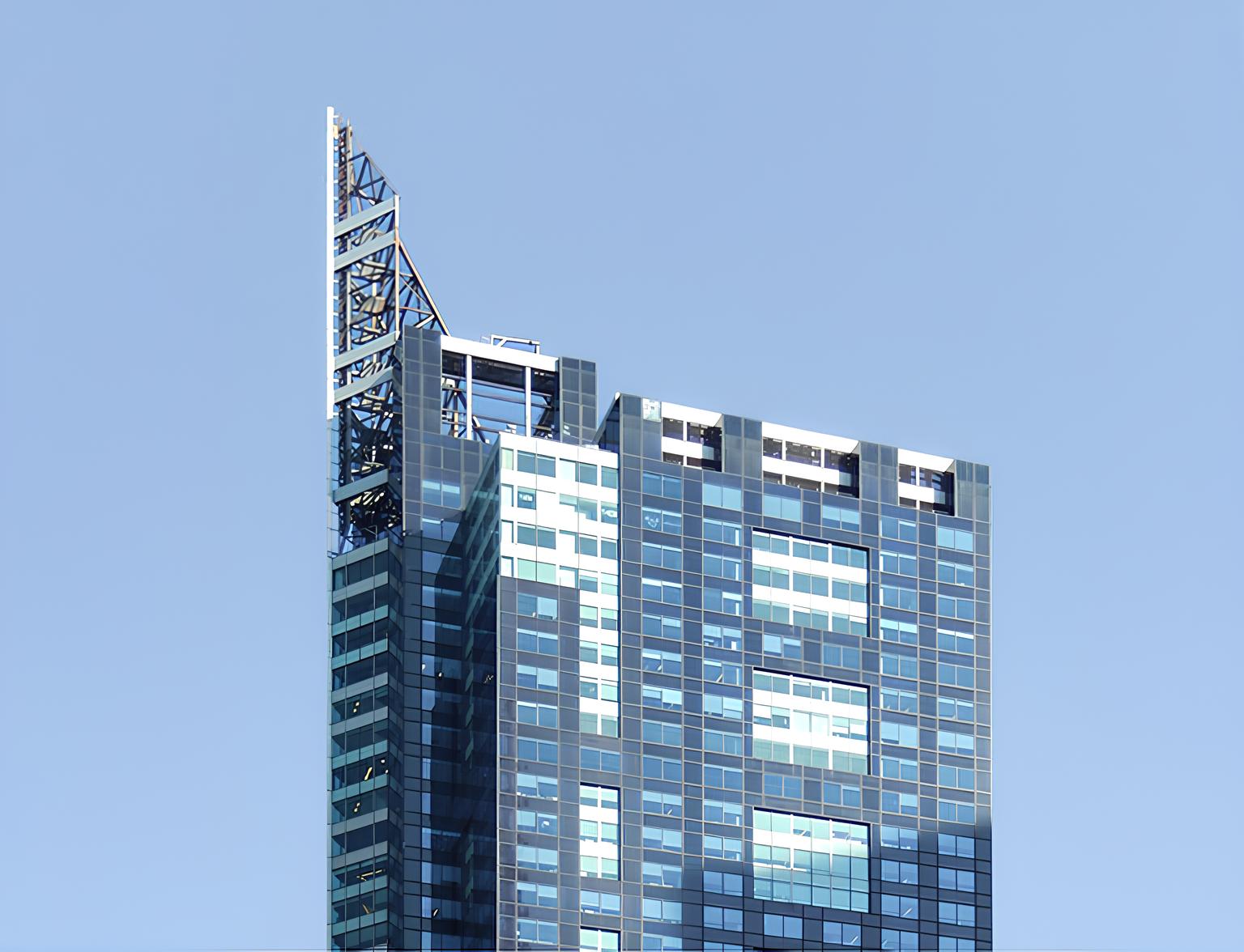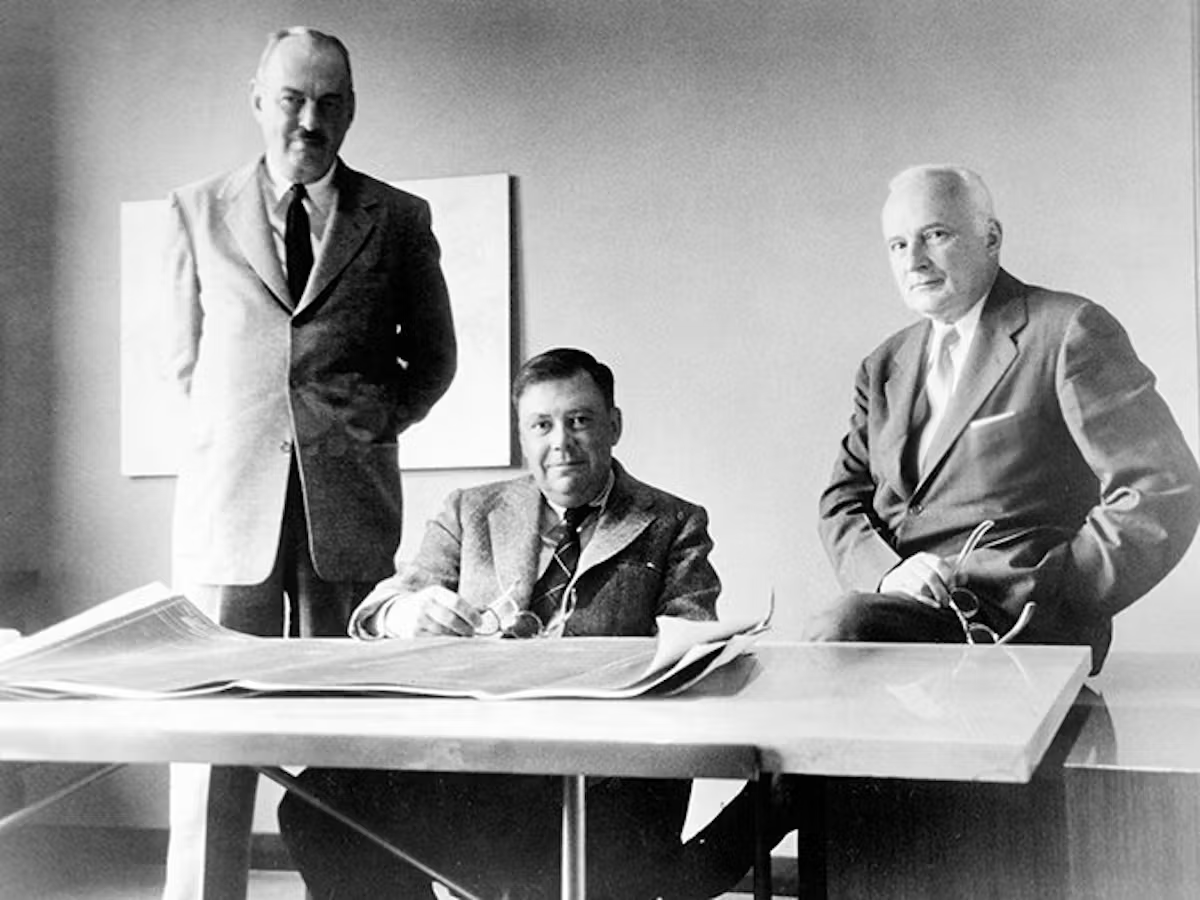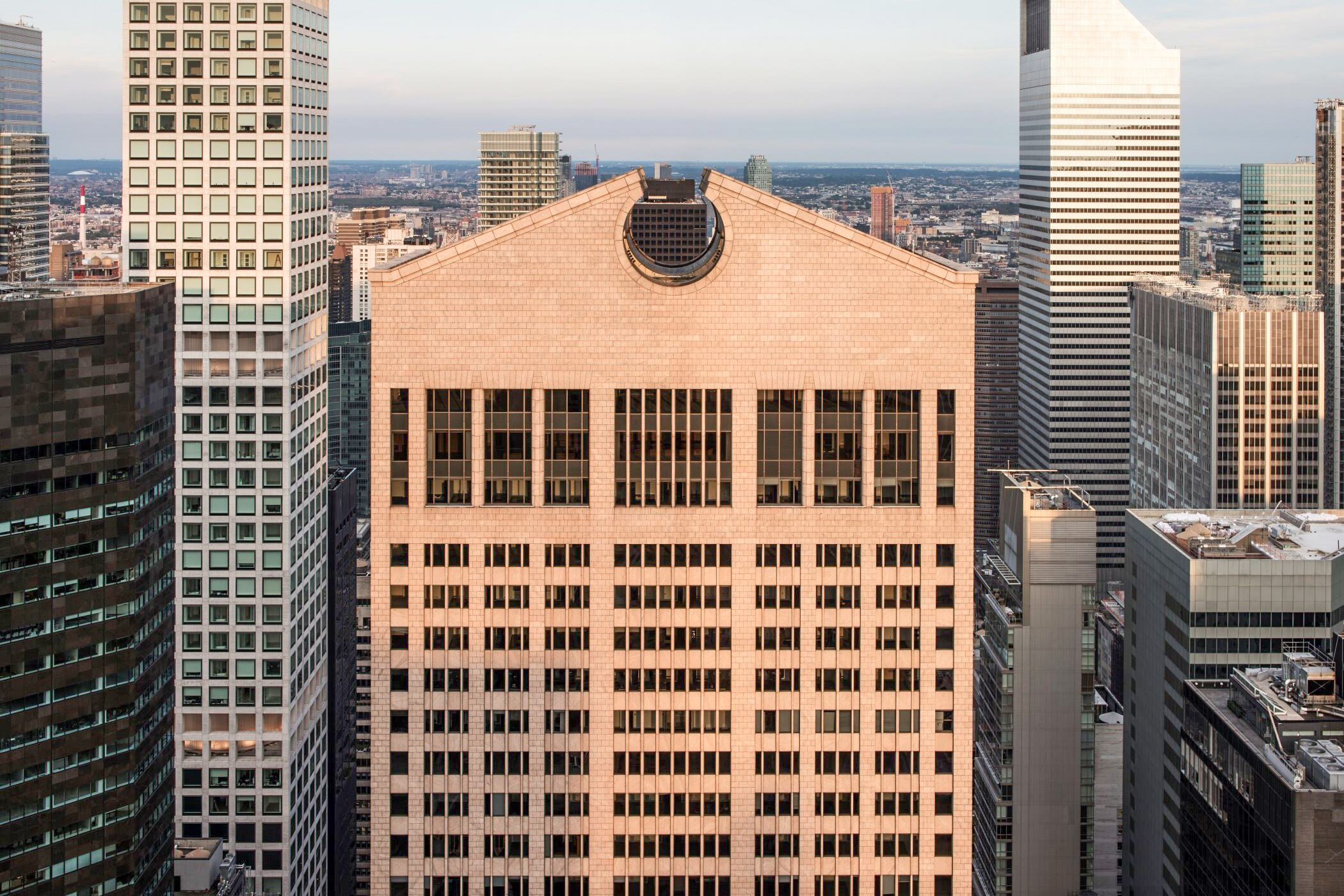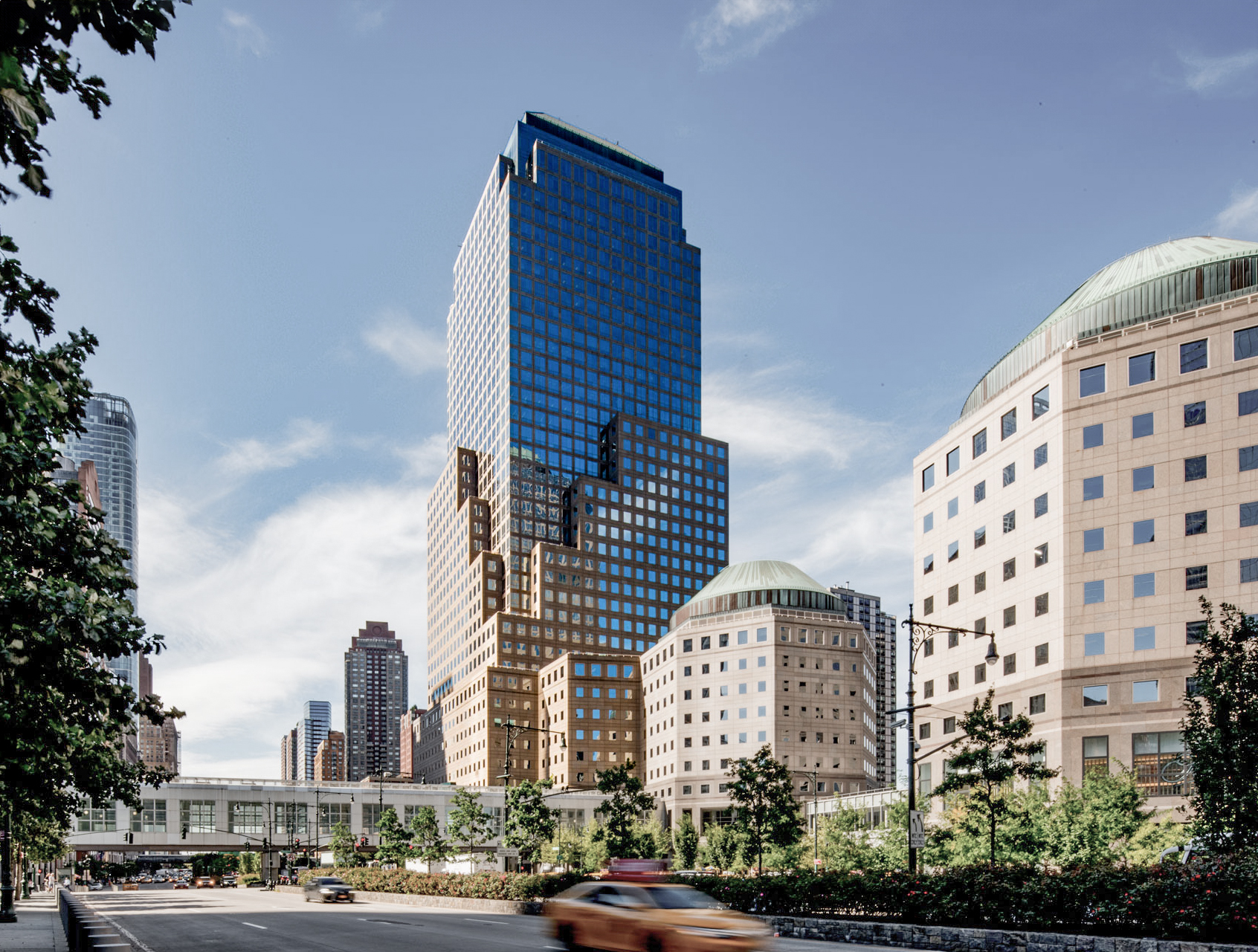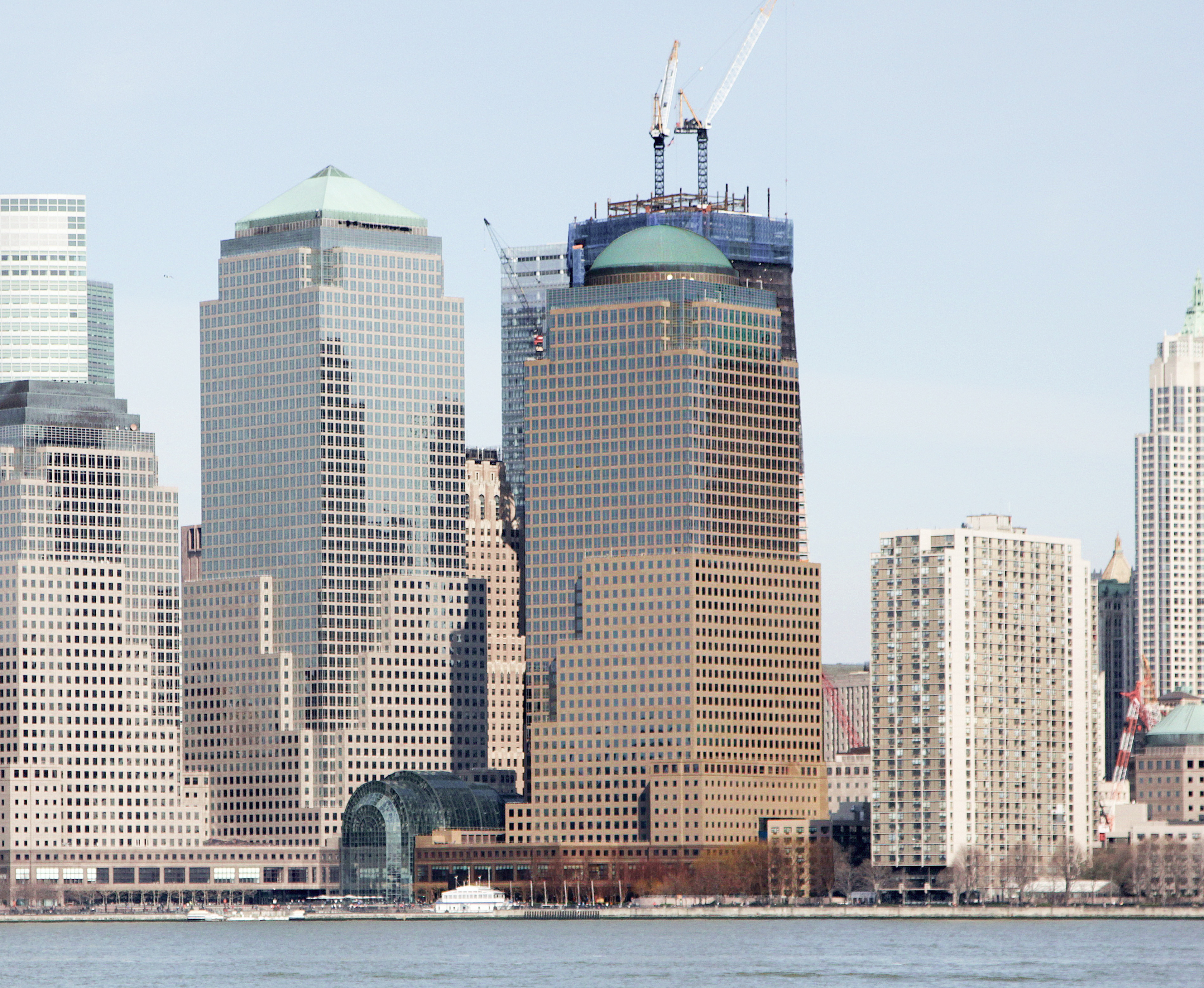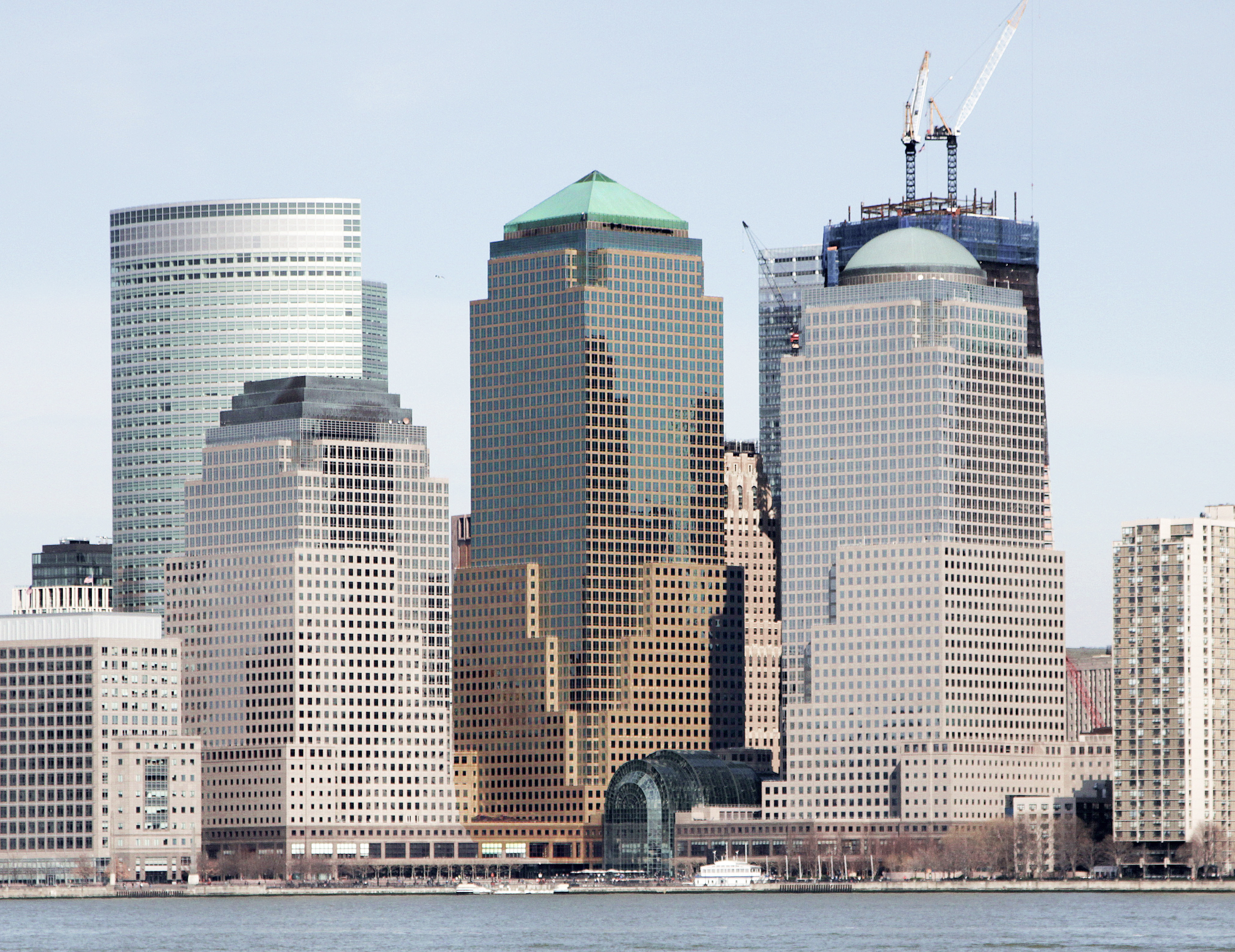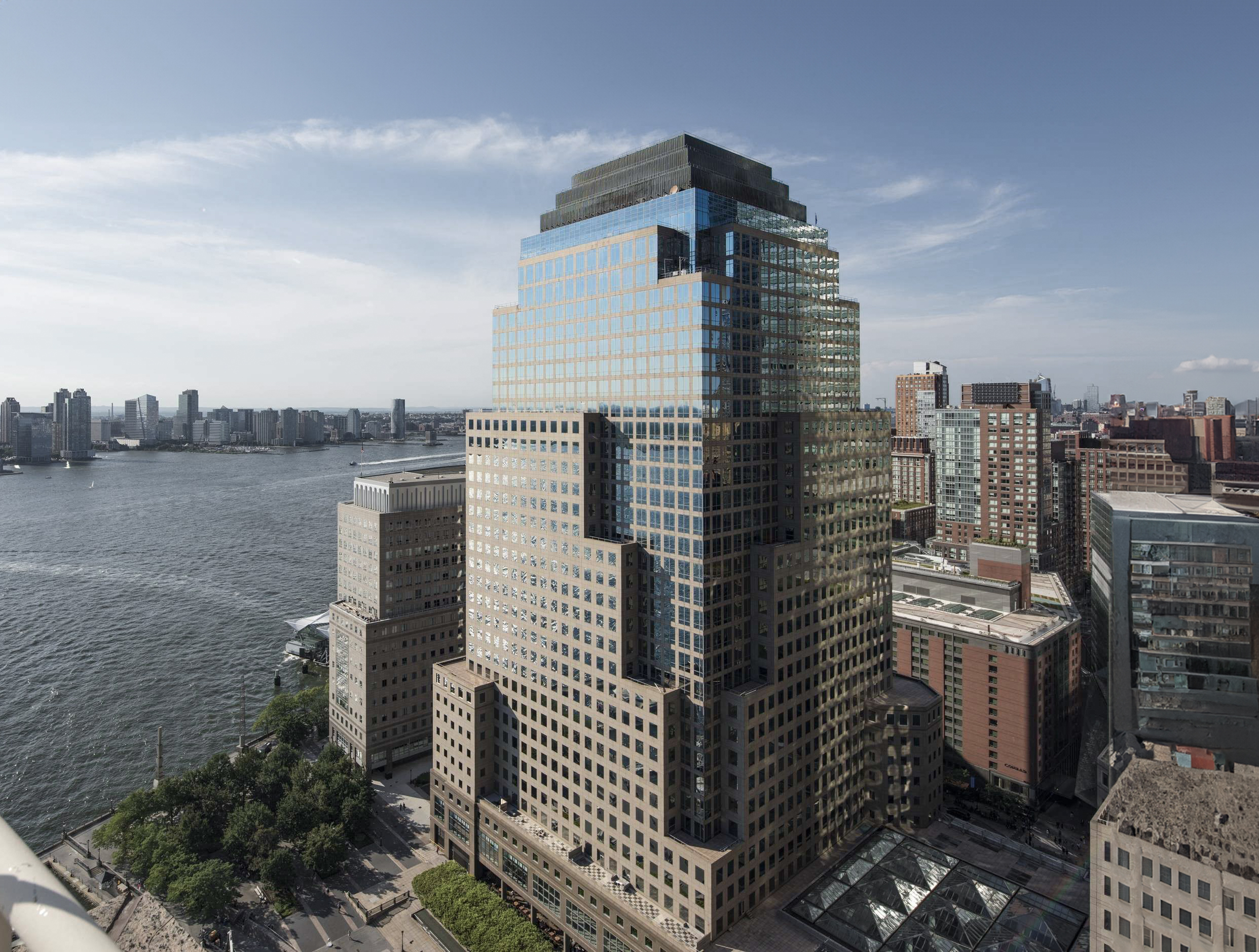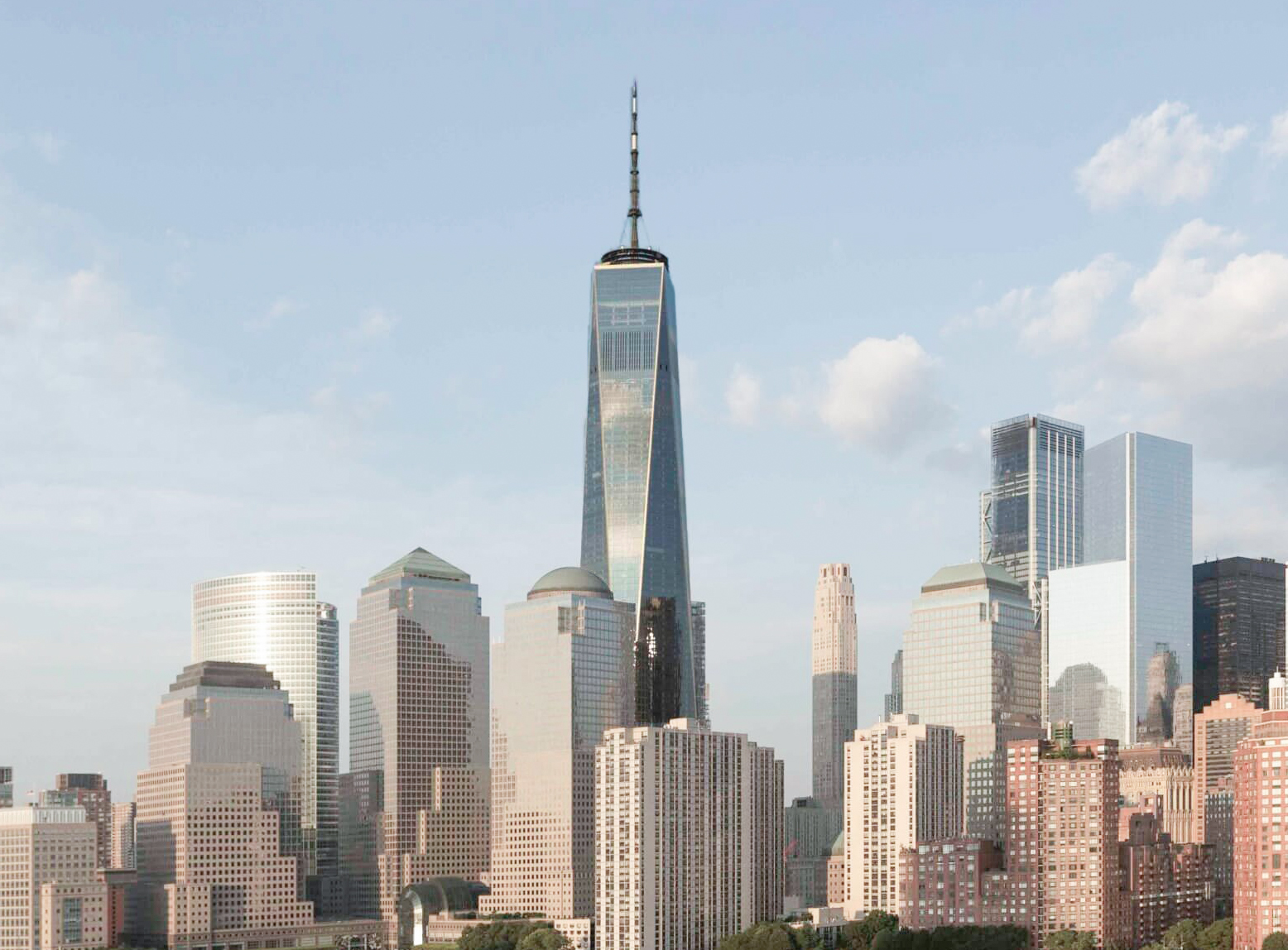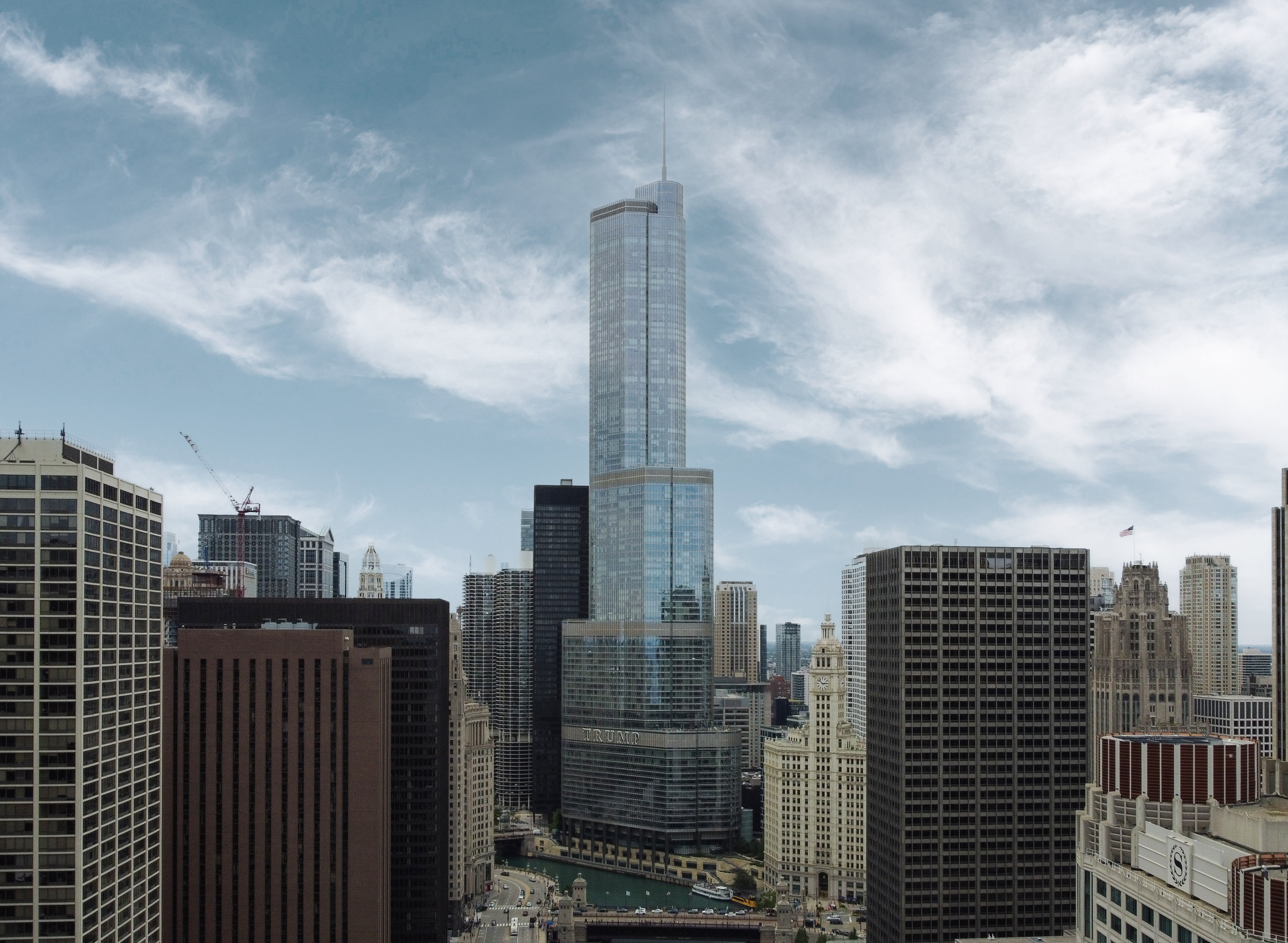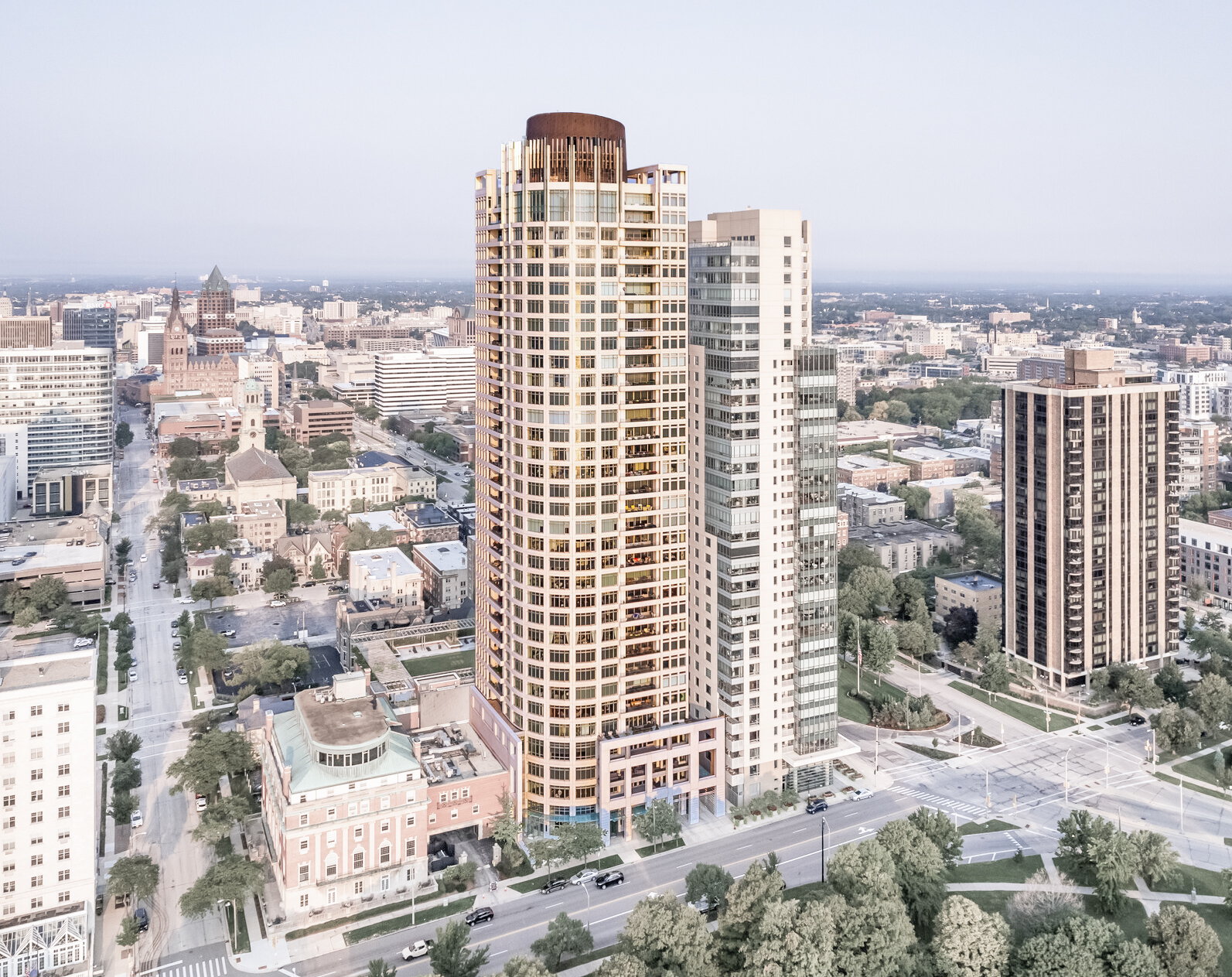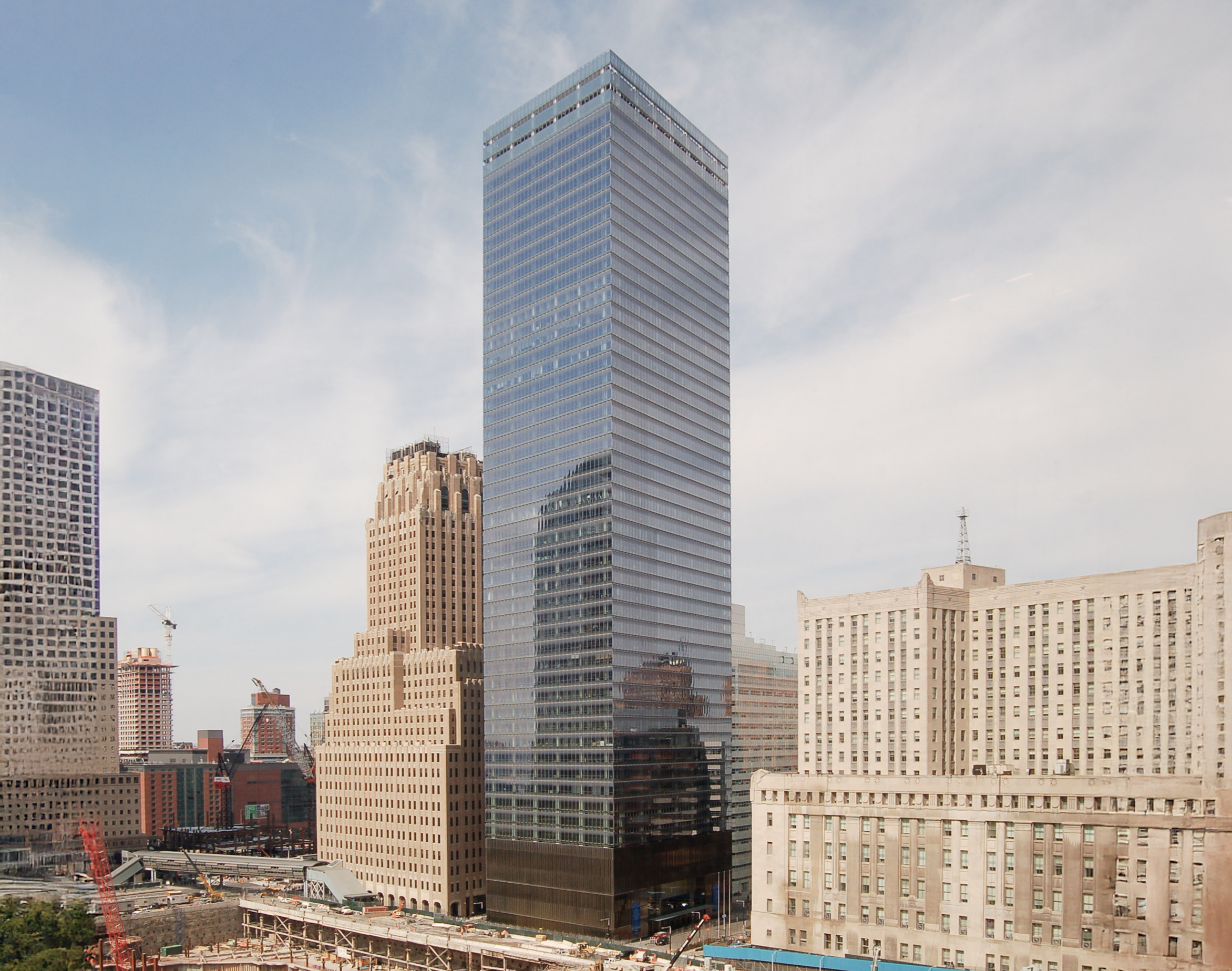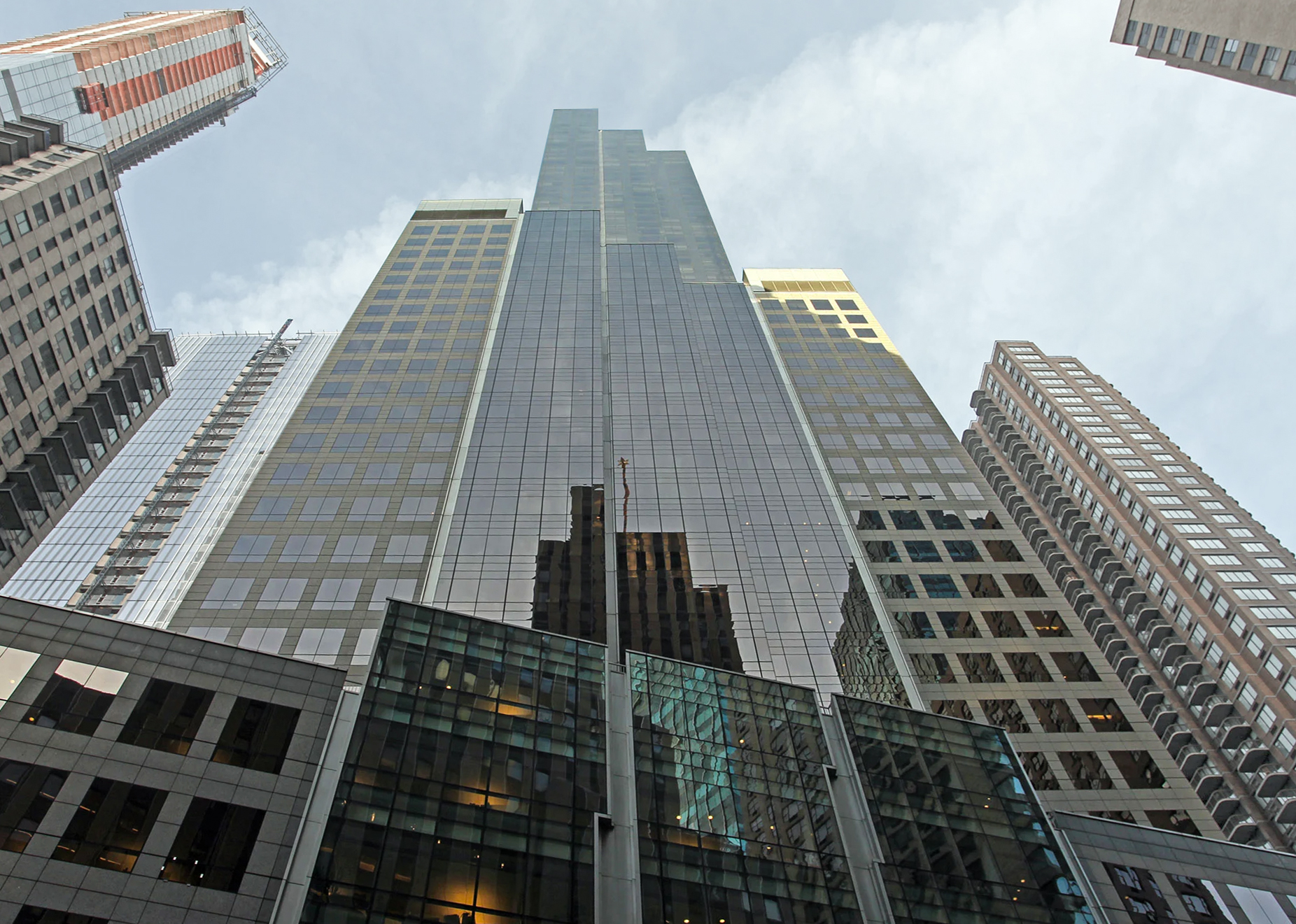The 1540 Broadway Building is a Postmodernist skyscraper designed by Skidmore, Owings & Merrill, with David Childs as lead architect, and built between 1988 and 1990 in New York, NY.
1540 Broadway Building is not the only name you might know this building by though. It is common for companies to want to attach their names to iconic buildings when they move in, or for the general public to come up with nicknames, and this one is no exception. The 1540 Broadway Building is also known, or has been known as, Bertelsmann Building, or One Broadway Place.
Its precise street address is 1540 Broadway, New York, NY. You can also find it on the map here.
The retail space located at the base of the building is one of the most iconic and photographed storefronts in the world, with colorful signage, lighting and streaming media messages.
The building underwent a major restoration between 2018 and 2019. The architect commissioned to undertake this restoration was Gensler.
